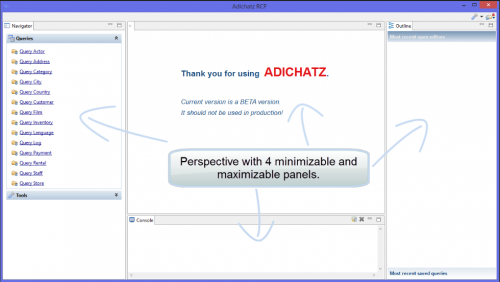UI side
|
The application platform is based on Eclipse 4 technology and provides:
|
Model layer
|
Model layer carries out the junction between UI side and Server side. Beans are provided by Hibernate, wrapped in Application Data Cache to become an Entity. Application data cache and databinding service, entities is capable of managing:
|
Server side
An application jar is deployed in the Application Server environment which contains:
- An EJB module for managing requests and changes from UI side.
- A tree decision to package all related objects asked by client side in one go.
- An EJB module for ensuring consistency (locks).
- An implementation for OneToOne relationship for Hibernate.
- A solution to automatically create composite keys (parent key, increment).

